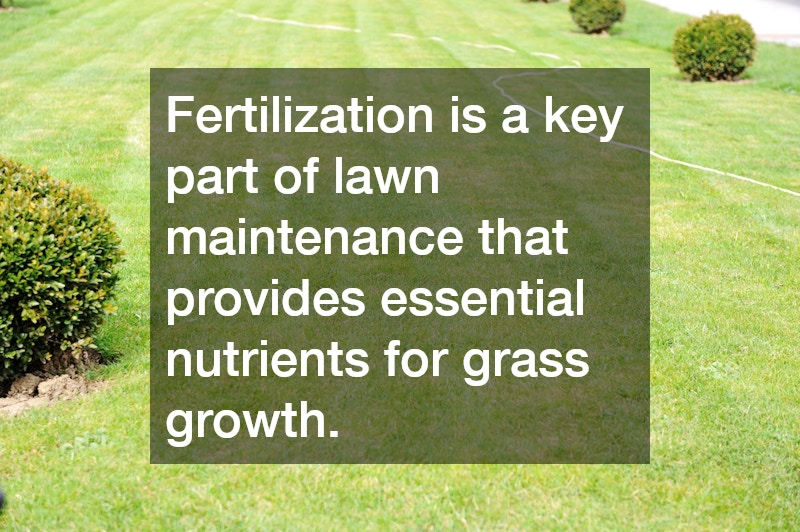
Maintaining a lush, green lawn is not just about mowing the grass every now and then. It requires a comprehensive understanding of lawn care techniques and schedules to ensure your lawn remains healthy year-round. This guide will dive into the essentials of lawn maintenance, helping you cultivate a lawn that thrives in any climate.
Understanding Lawn Maintenance Fundamentals
At the core of effective lawn maintenance is understanding the specific needs of your grass type, such as their ideal soil pH and climate conditions. Different types of grass have distinct requirements and will respond differently to watering, fertilization, and mowing.
For instance, warm-season grasses like Bermuda or Zoysia thrive in the summer heat, while cool-season grasses such as Kentucky bluegrass prefer cooler temperatures.
Analyzing your lawn’s current condition helps in pinpointing the necessary adjustments needed for its optimal health. Performing a soil test can reveal if there’s a need for adjusting soil pH levels or adding nutrients. This information guides you in selecting the proper fertilizers and amendments to support grass growth.
Regular maintenance tasks like mowing, aerating, and dethatching play critical roles in keeping your grass in top condition. Mowing should be done frequently enough so that no more than a third of the grass height is cut at a time. Aerating the lawn allows for better oxygen penetration, while dethatching removes excess organic debris that can suffocate the grass.
The Importance of Watering Correctly
Water is a vital component of lawn care, and getting the watering schedule right is crucial for a healthy lawn. Over-watering or under-watering can lead to problems such as shallow roots, fungal diseases, and wilting. Generally, lawns require about one inch of water per week, including rainfall, to remain healthy. It’s best to water deeply and infrequently, encouraging deep root growth.
Early morning is the ideal time to water your lawn, as it reduces evaporation and allows the grass to dry before nightfall, preventing diseases. Avoid watering in the evening or late afternoon, as this can lead to prolonged moisture on the grass blades, increasing the risk of fungal problems. Investing in a smart irrigation system can also help conserve water by adjusting the watering schedule according to the weather forecast.
Consider the specific needs of your grass type when setting up your irrigation schedule. Warm-season grasses often require more frequent watering in the summer, while cool-season grasses may go dormant during hot, dry periods and may not require as much water. Monitoring the moisture levels in the soil can also help you determine the best watering routine for your lawn.
Effective Fertilization Techniques
Fertilization is a key part of lawn maintenance that provides essential nutrients for grass growth. The three main nutrients in lawn fertilizers are nitrogen, phosphorus, and potassium, each playing a different role in the health of your lawn. Selecting a fertilizer that matches the nutrient needs of your grass type and the soil’s current conditions is vital for optimal growth.
The timing and frequency of fertilization should align with your grass type’s growth patterns. For instance, cool-season grasses benefit from fertilization in the fall and spring, while warm-season grasses thrive with summer fertilization. Over-fertilizing can lead to excessive growth and vulnerability to diseases, so it’s important to follow the recommended rates for application.
Slow-release fertilizers are generally preferred, as they provide a steady supply of nutrients over an extended period, reducing the risk of nutrient runoff and environmental impact. Organic fertilizers, which are derived from natural materials, are also an excellent choice for environmentally-conscious homeowners. Understanding the fertilizer label is essential to ensure that you apply the correct amounts for your lawn’s needs.
Dealing with Weeds and Pests
Weeds and pests can quickly become a nuisance in any lawn, competing with grass for nutrients and sometimes causing significant damage. Identifying common weed types and understanding their growth patterns is the first step in effective weed control. Pre-emergent herbicides can help prevent weed seeds from germinating, while selective post-emergent herbicides target specific established weeds without harming the grass.
For pest management, regular monitoring of lawn pests and signs of potential infestations helps keep them in check. Common pests such as grubs, chinch bugs, and armyworms can cause significant damage if left unchecked. Integrated Pest Management (IPM) strategies, which incorporate cultural, mechanical, and chemical controls, are effective for maintaining a healthy, pest-free lawn.
Natural pest management methods, such as introducing beneficial insects or using organic pesticides, offer environmentally-friendly alternatives. Maintaining a healthy lawn through proper fertilization, watering, and mowing can also serve as a natural defense against many weed and pest problems, reducing infestations by promoting strong, resilient grass growth.
Preparing Your Lawn for Different Seasons
Lawn care practices should be adjusted according to the season to maintain a healthy lawn year-round. In the spring, focus on cleaning up winter debris and preparing the lawn for a new growing season by raking and reseeding bare patches. Spring also provides the opportunity to aerate the soil and apply pre-emergent herbicides to prevent summer weeds.
During the summer, it’s critical to be vigilant about watering and mowing practices, as heat stress can take a toll on even well-maintained lawns. Reduce mower blade height to prevent sunburnt grass, and avoid mowing during the hottest part of the day. Additionally, summer is a good time to apply a mid-season fertilizer boost to support grass during the high-growth period.
Fall is an excellent time for more intensive lawn care activities, as cooler temperatures and increased rainfall create ideal conditions for grass recovery and growth. Overseeding can help fill in thin or bare areas, and applying a fall fertilizer will promote root growth and nutrient storage for the winter. Lastly, winter preparation involves cutting the grass short to prevent mold and covering sensitive plants if needed.
By understanding and implementing the fundamental principles of lawn maintenance, proper watering, fertilization, weed and pest control, and seasonal care, homeowners can enjoy a beautiful, lush lawn. Investing time and effort into lawn care not only enhances the curb appeal of your home but also contributes to a healthier environment. Whether you’re a seasoned gardener or a novice, there’s always something new to learn about taking care of your lawn.

